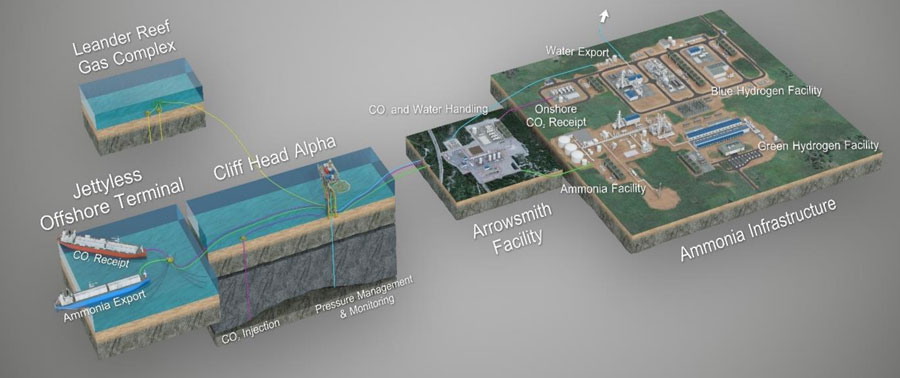Safeguard mechanism delivers commercial incentive to fast-track CCS projects
Energy
Energy
The Australian government’s Safeguard Mechanism reforms to slash carbon emissions from the country’s largest polluters. Reforms provide a clear business case and commercial incentive to accelerate investments to abate emissions, Pilot Energy says.
The federal Labor government recently won the backing of the Greens for its proposed reforms that would place a hard cap on carbon emissions from the 215 largest polluting facilities in Australia.
These facilities, which account for 28% of Australia’s annual emissions, will be required to take aggressive steps to cut their emissions by 4.9% each year to 2030 under the reforms, as the government gets tougher in a bid to meet its 43% emissions reduction target over the same period.
Pilot Energy (ASX:PGY), which is advancing one of Australia’s first offshore carbon capture and storage (CCS) projects in Western Australia’s Mid West, says this is exactly the right move to incentivise investments to abate emissions.
The Australian government continues to champion CCS, with Federal Minister for Resources and Northern Australia Madeleine King previously stating that the technology has a vital role to play to help the country meet its net zero targets.
The government has also previously pledged $1 billion to drive investment in decarbonisation of trade exposed industries like steel, cement, and aluminium.
CCS, which is a proven technology that has been in use for around five decades, involves the capture of carbon emissions, transportation and permanent storage of CO2 in an underground geological formation.
Under the new-look Safeguard Mechanism, any facility with annual emissions of 100,000 tonnes or greater is deemed a Safeguard Facility covered by the Safeguard Mechanism.
Safeguard Facilities are restricted from emitting more than their declining baseline emissions from July 1, 2023.
Pilot said the recently legislated reforms to the Safeguard Mechanism provide certainty for emissions intensive industries, and the Safeguard Facilities specifically, as to the action they must take to reduce and/or abate emissions for Australia to meet its net zero targets.
This is where the company’s Mid West Clean Energy Project (MWCEP) provides the key, Pilot says.
“If Safeguard Facilities elect to implement carbon capture and storage initiatives to reduce emissions, Pilot’s Cliff Head (CH) CCS project can provide these facilities, and other emitters, carbon management contracts for the required permanent storage of CO2 at the CH CCS project,” the company said.
Pilot initiated the MWCEP to leverage the existing operational asset base – comprising the Cliff Head offshore oil production facility and onshore Arrowsmith separation plant – into the production of clean energy.

The project includes a fully integrated CCS operation, with Pilot and partner Triangle Energy (ASX:TEG) late last year becoming the first in Australia to lodge a submission seeking regulatory approvals for an offshore CCS project under Commonwealth legislation that has been in place since 2006.
The project would provide CCS services to third parties and support Pilot’s subsequent production of blue hydrogen, green hydrogen, and ammonia.
Studies have shown the project would be capable of initially storing 9.7 million tonnes of CO2 at an injection rate of 665,000 tonnes per annum for about 15 years.
But it has substantial estimated storage potential of up to 50 million tonnes.
Under a carbon management contract, the CCS project would enable the capture and permanent underground storage of direct (scope one) emissions for Safeguard Facilities.
“This will be fundamental to enabling Pilot’s potential customers to implement emission reduction strategies to meet not just the greenhouse gas emission reduction obligations applicable to all Safeguard Facilities (commencing from 1 July 2023) to keep below the declining baseline imposed under the regulatory reforms (“Safeguard Baseline”) but also to capture and permanently store up to 100% of its emissions,” Pilot explained.
“Further, for each tonne of Scope 1 emissions abated by a Safeguard Facility in excess of the Safeguard Baseline, a Safeguard Mechanism Credit (SMC) will be generated, which that entity can sell to other Safeguard Facilities.
Generating and selling SMC’s is a significant revenue opportunity for the Safeguard Facilities and clearly demonstrates the value of assets like the CH CCS Project during the energy transition.
Pilot and Triangle are now progressing the foundational elements of the project, including obtaining key regulatory approvals and engineering for the CH CCS project.
Pilot said significant progress had been made with respect to engagement with interested parties to introduce strategic and financial partners and customers into the MWCEP.
This article was developed in collaboration with Pilot Energy, a Stockhead advertiser at the time of publishing.
This article does not constitute financial product advice. You should consider obtaining independent advice before making any financial decisions.